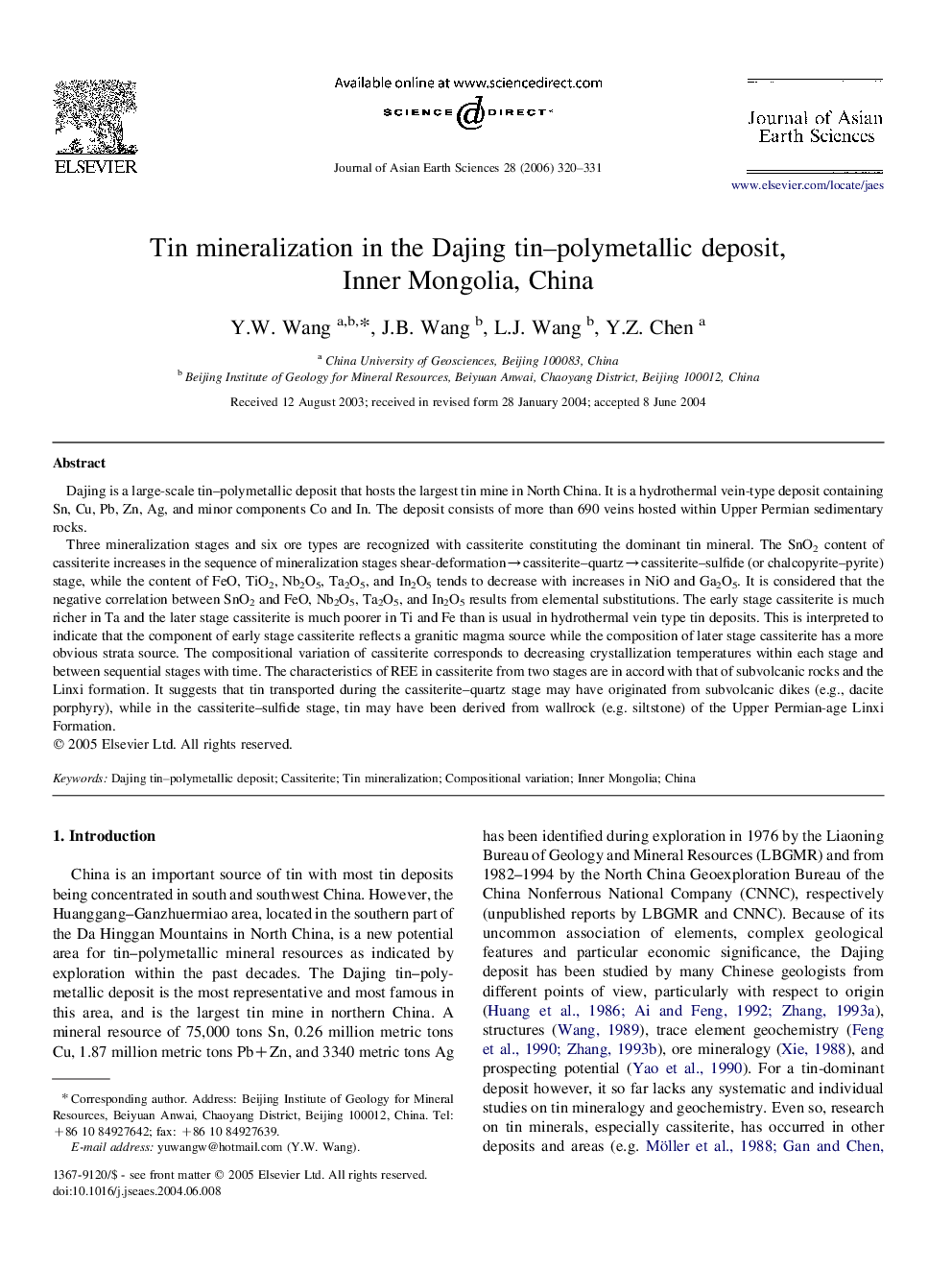| کد مقاله | کد نشریه | سال انتشار | مقاله انگلیسی | نسخه تمام متن |
|---|---|---|---|---|
| 4732641 | 1640441 | 2006 | 12 صفحه PDF | دانلود رایگان |

Dajing is a large-scale tin–polymetallic deposit that hosts the largest tin mine in North China. It is a hydrothermal vein-type deposit containing Sn, Cu, Pb, Zn, Ag, and minor components Co and In. The deposit consists of more than 690 veins hosted within Upper Permian sedimentary rocks.Three mineralization stages and six ore types are recognized with cassiterite constituting the dominant tin mineral. The SnO2 content of cassiterite increases in the sequence of mineralization stages shear-deformation→cassiterite–quartz→cassiterite–sulfide (or chalcopyrite–pyrite) stage, while the content of FeO, TiO2, Nb2O5, Ta2O5, and In2O5 tends to decrease with increases in NiO and Ga2O5. It is considered that the negative correlation between SnO2 and FeO, Nb2O5, Ta2O5, and In2O5 results from elemental substitutions. The early stage cassiterite is much richer in Ta and the later stage cassiterite is much poorer in Ti and Fe than is usual in hydrothermal vein type tin deposits. This is interpreted to indicate that the component of early stage cassiterite reflects a granitic magma source while the composition of later stage cassiterite has a more obvious strata source. The compositional variation of cassiterite corresponds to decreasing crystallization temperatures within each stage and between sequential stages with time. The characteristics of REE in cassiterite from two stages are in accord with that of subvolcanic rocks and the Linxi formation. It suggests that tin transported during the cassiterite–quartz stage may have originated from subvolcanic dikes (e.g., dacite porphyry), while in the cassiterite–sulfide stage, tin may have been derived from wallrock (e.g. siltstone) of the Upper Permian-age Linxi Formation.
Journal: Journal of Asian Earth Sciences - Volume 28, Issues 4–6, 15 December 2006, Pages 320–331